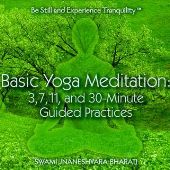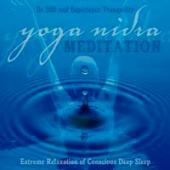|
|
Dasnami:
The Ten Names

Adi Shankaracharya (8th
century CE) organized monks into into ten orders (dasa=ten, nami=names).
Many, possibly most, although not all swamis are related to one of
these. Each related to common characteristics of the monks of each of
the orders, as it was at that time. In the past 1200 years, however,
there is not such a close relationship to the underlying meaning of the
name. For example, it may have been true at one time that the monks of
the Puri order "lived in the cities", although that is not a
requirement, and swamis today of Puri dasnami live any a diversity of
locations, some in cities, and some not. The relation to the name is
nominal, at best.
Swami Rama writes in
Living with the Himalayan Masters: "Our tradition is Bharati. Bha means
'knowledge'; rati means 'lover.' Bharati means 'he who is the lover of
knowledge.' From this comes the word Bharata, the land of spiritual
knowledge, one of the Sanskrit names used for India." Swami Rama's
linkage to Bharati comes from his initiation as Dandi (staff carrying)
swami, which was given to him by a leader of swamis who was of the
Bharati order. At that time Swami Rama became known as Dandi Swami
Sadashiva Bharati. It was much later that he took the name Swami Rama.
Bharati: full of
light
Giri: live in
the mountains
Puri: live in
the cities
Saraswati:
scholars
Van: live in
forests
Aranya: live in
groves
Tirtha: live in
pilgrimage places
Parvat: live in
the high mountains
Sagar: live at
the ocean
Nath: defenders
of the faith


-------
This site is devoted to
presenting the ancient Self-Realization path of
the Tradition of the Himalayan masters
in simple, understandable and beneficial ways, while not compromising
quality or depth. The goal of our sadhana or practices is the highest
Joy that comes from the Realization in direct experience of the
center of consciousness, the Self, the Atman or Purusha, which is
one and the same with the Absolute Reality.
This Self-Realization comes through Yoga meditation of the Yoga
Sutras, the contemplative insight of Advaita Vedanta, and the
intense devotion of Samaya Sri Vidya Tantra, the three of which
complement one another like fingers on a hand.
We employ the classical approaches of Raja, Jnana, Karma, and Bhakti
Yoga, as well as Hatha, Kriya, Kundalini, Laya, Mantra, Nada, Siddha,
and Tantra Yoga. Meditation, contemplation, mantra and prayer
finally converge into a unified force directed towards the final
stage, piercing the pearl of wisdom called bindu, leading to the
Absolute.
|
|